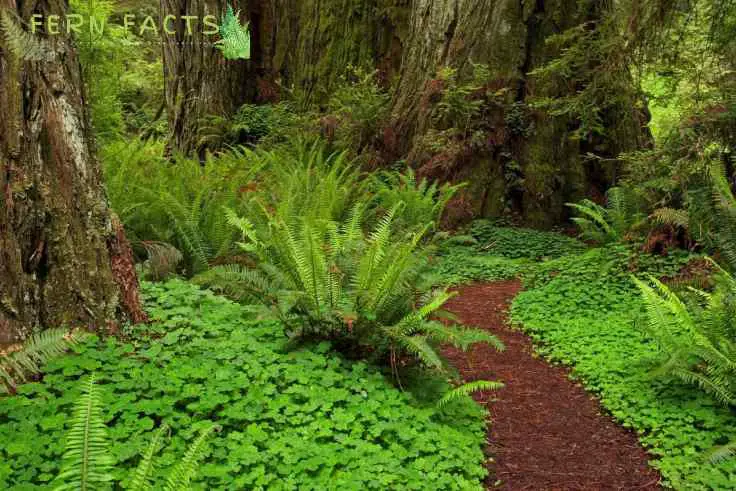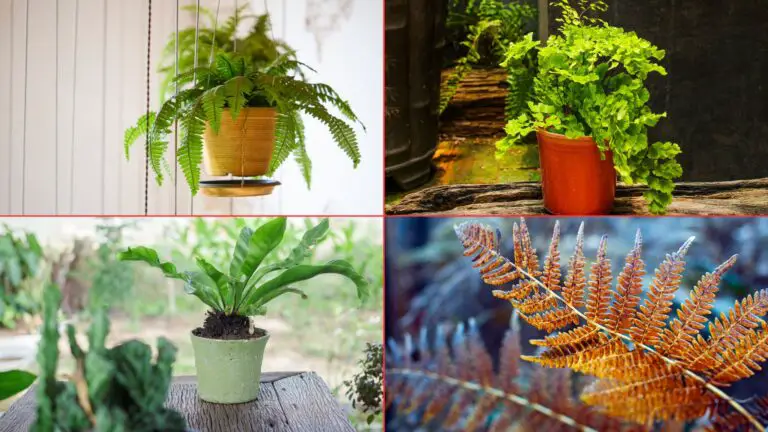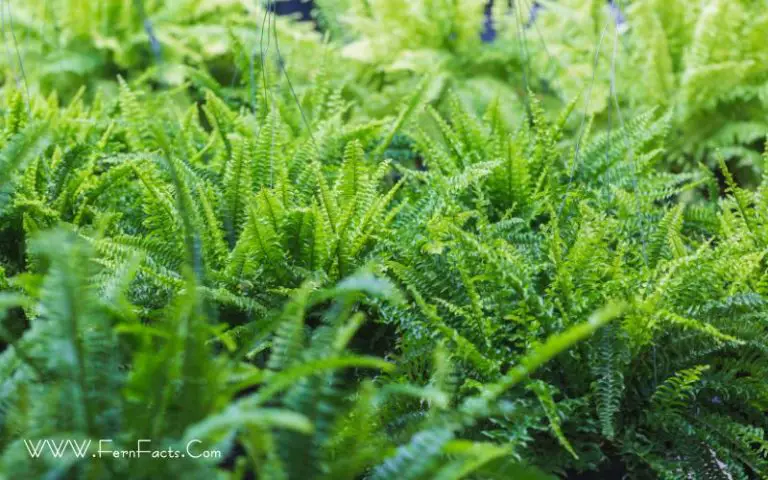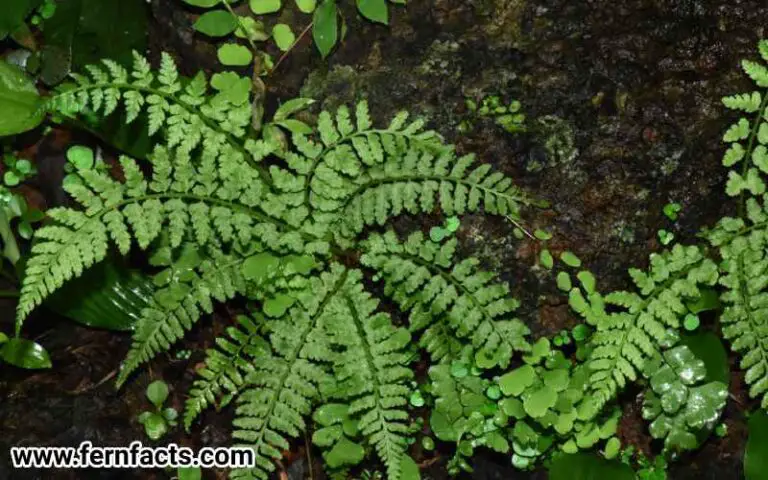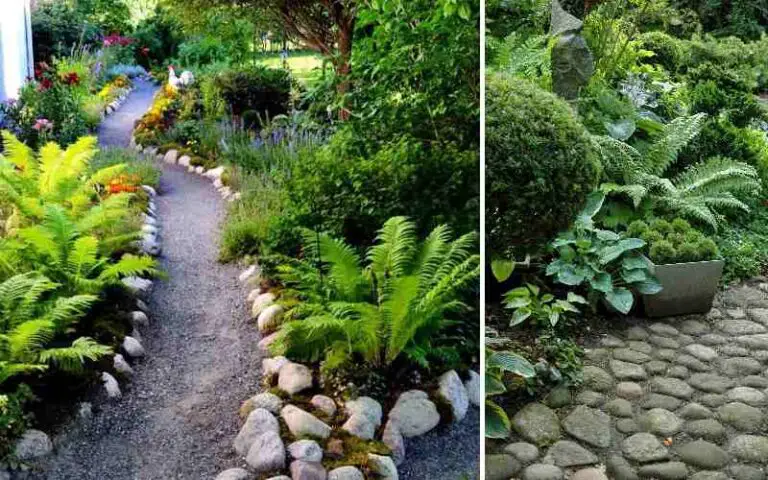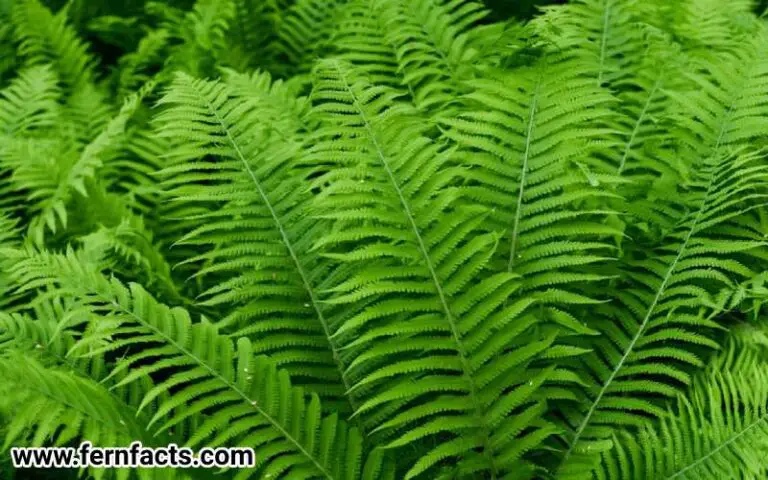Best Ferns for Wet Ground
Ferns have their individual characteristics and requirements. Some are evergreen and some are Deciduous. Therefore, according to the plant’s features, their needs and requirements also vary from each other.
For instance, some prefer shade, some don’t. Similarly, some ferns do well in wet ground and some thrive in moderate moist conditions. Have you wondered which ferns do well in wet ground conditions?
If you do not, then this article is for you beyond any doubt. In this article, I’ll give you a list of ferns that grow well in wet soil or wet grounds.
Additionally, I’ll also provide you with some fern names that are not good for wet but do moderately well in moist and damp conditions. So here are those wet ground ferns.
Best Ferns for Wet Soil or Wet Ground
Every fern has its features and characteristics. In the same way, their requirements also vary from species to species.
There are some ferns that prefer wet ground or wet soil to grow and thrive. Here are those:
Japanese Painted Fern
- Botanic name: Athyrium niponicum
- Common name: Japanese Painted fern
- Native range: Eastern Asia
- Family: Polypodiaceae
- Plant type: deciduous perennial
- Size: around 1-3 ft tall, 1-2 ft wide
- light: bright and indirect sunlight or partial sunlight
- Soil: neutral acidic, alkaline, moist well drained
- Humidity: 40-60
- Temperature: 50- 80 F
- USDA zone: 4,5,6,7,8,9
Japanese-painted ferns are known for their silver foliage fronds which give unique coloration to the garden. These unique colorful ferns are the best addition to wet ground or wet soil.
Also, these ferns are mostly local to eastern Asia. Their beautiful colorful foliage is usually 30 to 75 cm long. If you want to grow wet ground ferns, these Japanese-painted ferns would be the best option because of their color intricate texture, and wet-soil condition.
Nonetheless, they need alkaline, neutral acidic wet soil that enriches and helps them to grow actively. Besides, these ferns also prefer a cold humid atmosphere with moist wet soil with indirect sunlight since they are highly intolerable of direct sun exposure.
That’s why they need partial or fully shaded places to grow and develop.
Cinnamon Fern
- Botanic name: Osmundastrum cinnamomeum
- Common name: Cinnamon Fern
- Natural range: America, Asia
- Natural habitat: bogs, moist woodlands, swamps
- Plant: Perennial
- Soil: acidic soil, clay, sand, well-drained, moist
- Light: full to partial shade
- Height: around 1 to 3 ft
- Width: around 2 to 3 ft
- USDA Zone: 3-9
Cinnamon ferns also additionally enlisted in wet soil ferns. Their bright green color, foliage texture will give you wildlife look into your mini house garden.
These ferns have densely matted wiry roots; mostly native to America and eastern Asia with their natural habitats are woodlands, bogs and swamps.
Since they are naturally inherited with wet conditions, therefore they grow in wet moist acidic soil along with indirect sunlight. As they are deciduous plants, they will shine in your garden throughout the summertime, and turn yellow in the winter seasons before dying.
Cinnamon ferns have also been used by First Nation tribes as a food source and have contributed to medical purposes like cold remedies, gynecological issues, and snake bites as well from the ancient time period.
So these ferns will be the best medical plants for you to have in your house.
Lady Ferns
- Botanical names: Athyrium filix-femina
- Plants: Deciduous plants
- Shade: Partial shade or full shade
- Height: around 1 m
- Soil: acidic or neutral. Moist, poor drainage tolerated
- Temperature: 50- 80 F
- USDA zone: 4,5,6,7,8,9
Lady fern species are popular deciduous plants that can grow well in wet soil. These feathery lady ferns are usually native to Asia, Europe, North Africa, the United States, and Canada along with survival tactics in Alaska under the right environment.
These ferns can grow best in damp moist or wet soil and shady woodland areas. Furthermore, Lady fern can tolerate -20° C or -4° F in the environment.
Since They crave fully shaded places with the right moisture level, better if you provide them with their ideal condition. However, they can still survive under full sunlight conditions because of their wet ground conditions.
Wet soil or ground keeps the soil and roots hydrated so that they can tolerate even full sun exposure.
However, To mix their soil, you need to use acidic or neutral soil. As they have poor drainage tolerance, you need to give them a well-draining system so that extra water can be drained out easily.
Royal Ferns
- Botanical name: Osmunda regalis
- Plants: Deciduous
- Native range: Europe, Asia and Africa
- Native habitats: Woodlands
- Shade requirements: full, partial, full sun
- Height: around 2.5 meter
- Soil: acid, neutral, alkaline, moist poor drainage tolerance
Royal Ferns has also held recognition of planting in the wet soil. These ferns are mostly native to Europe, Asia, and Africa by prefer wetlands or woodland habitats near any streams or rivers.
Therefore, they require acidic neutral wet soil conditions to grow and thrive. However, these ferns are also called flowering ferns because of their fertile fronds.
Unlike many ferns, these ferns have a unique coloration journey. During early growth, it has purple fronds which change from purple to green and green to golden brown throughout the years.
The unique coloration of their growing phase makes these plants pretty and beautiful among nature enthusiast people.
Interrupted Ferns
- Botanical name: Osmunda claytoniana
- Plants: Deciduous
- Native range: Eastern Asia, eastern United States, Canada.
- Shade requirements: partial shade
- Height: up to 1 m
- Soil: acidic, moist, well-drained
Interrupted ferns are deciduous plants that are widely spreadable in Eastern Asia, the United States, and Canada.
These ferns can also require wet soil conditions for their healthy growth. Nevertheless, these ferns can be the least considered ferns for alkaline soil as they can grow better in acidic and neutral soil with a moist wet environment.
Besides, a dappled atmosphere with indirect sunlight would be the best fit for them to thrive in nature as well.
Oriental Chain Ferns
- Botanical name: Woodwardia orientalis
- Plants: evergreen
- Native range: Asia, Japan, China Philippines, Taiwan
- Shade requirements: partial shade under indirect sunlight light
- Height: up to 1.5 meter
- Soil: acid or neutral, moist, and poor drainage tolerance
Oriental chain ferns are also considered one of the best fit for wet ground conditions. These ferns are widely distributed in Asian countries like Japan, China, the Philippines, Taiwan, etc.
Like other ferns, they also prefer well-drained Soil with wet conditions or environment. They need acidic soil that can enrich their growth.
Similarly, these are also very adaptable ferns for your gardens or yard because these plants have an arching growth habit in the wet soil.
Ferns for Moderate Moist Conditions
Here are some that can’t survive or tolerate wet ground and wet soil conditions rather they prefer moderate moist conditions. Here are those:
Ostrich Ferns
- Botanical name: Matteuccia struthiopteris
- Common name: Ostrich fern
- Plants : Deciduous perennial
- Native range: North America, Europe, Northern Asia
- Native habitats: rich woodlands, low areas, swamps
- Shade requirements: partial or fully shaded
- Height: around 3 to 8 ft
- Width: up to 3-5 ft
- Hardyzone: 3, 4, 5, 6, 7
- Soil: acidic soil (5- 6) pH, moist, organic matter
Ostrich ferns are deciduous plants that have crown shape or colony-forming ferns. Their crown shape forms a completely vertical crown shape on the ground.
These ostrich ferns are also one of the ornamental ferns in gardens. Since they are moist conditions ferns, they want their soil more moist and damp conditions not flooded or wet ground.
Also, they prefer well-drained soil that can drain out extra water from the soil.
Like most other ferns, these ferns also got awards from the Royal Horticultural Society’s Award of Garden Merit. Additionally, their situation will be more vulnerable in winter if you don’t protect them.
Giant Chain Ferns
- Botanic name: Woodwardia fimbriata
- Common name: giant chain fern
- Family: Blechnaceae
- Plant type: perennial
- Native range: North America
- Light: partial sun, shaded place
- Soil: moist, well-drained
- Soil pH: acidic ( 5 to 7)
- Height: around 3 to 8 ft
- Width: almost 4 ft
- Special characteristics: container friendly
- Zone: 8,9,10
- Propagation: seed or division
Giant Chain ferns are one of the largest ferns in North American countries. However, these Chain ferns are one of the rare species because it’s very sensitive in Washington state.
Therefore, they become vulnerable in numbers due to their sensitive characteristics. Since they are sensitive and more vulnerable ferns, wet ground is a big no for them.
They prefer moist damp conditions, not standing water situations. They cannot tolerate standing water. These ferns fronds can’t tolerate frost so you need to plant these under a protected and filtered shaded area with moist soil.
Sensitive Ferns
- Botanical name: Onoclea sensibilis
- Common name: sensitive fern, bead fern,
- Plants : Deciduous perennial
- Native range: Northern hemisphere: Russia, East, China and eastern Asia, Northern America
- Native habitats: Wood habitats
- Shade requirements: full to partial shade
- Foliage color: green
- Height: 3 to 4 inches
- Soil type: clay, loam, sand
- Soil pH: acidic, neutral
- Tolerance: Rabbit’s tolerance, wet soil tolerance
- Hardizone: 4,5,6,7,8
- Toxicity: Mammals
Sensitive ferns are pale sea green color ferns which also prefer moist damp environments. These ferns prefer acidic loam sandy Soil which is below 6.8 pH.
Additionally, they are fond of wood habitats, dell swamps, wet meadows, thickets, and bogs along with riverbanks and roadside ditches.
They can hardly tolerate freezing temperatures; can tolerate maximum -20°C to -15°C temperatures around themselves.
Besides, these ferns also received garden merit awards from the horticulture society for their extraordinary qualities.
You can plant these ferns as shady bed borders, and underplants for roses and shrubs gardens. Additionally, they are also highly sensitive ferns and their fronds die quickly if anyone touches them.
Also, they are well resistant to rabbits and deer.
Final Note
On the final note, ferns’ characteristics vary in their features and requirements. Therefore, some ferns like Japanese-painted ferns, cinnamon Fern, royal ferns, interrupted ferns, Lady ferns, and oriental ferns would do well in wet soil conditions.
On the contrary, ferns like ostrich ferns, giant chain ferns,s, and sensitive ferns will not stand by the wet ground but rather prefer moist and damp soil.
By understanding your fern’s characteristics, you can make their preferred soil mixture where they can bloom and thrive.

